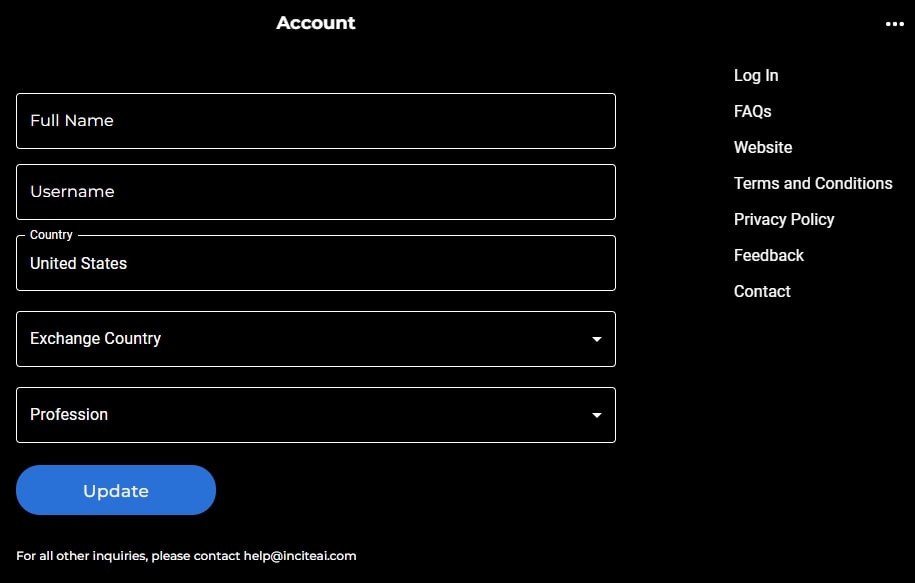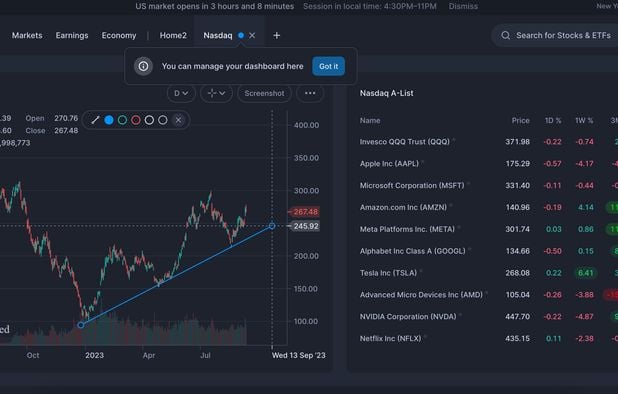20 Top Ideas For Selecting AI Stock Trading Platform Sites
20 Top Ideas For Selecting AI Stock Trading Platform Sites
Blog Article
Top 10 Tips For Pricing And Costing Of Ai Software For Predicting And Analysing Stocks
It is crucial to evaluate the pricing and cost of AI trading platforms that predict/analyze stock prices. This will allow you to avoid any hidden costs or charges. Pricing structures differ widely, and it is essential to be aware of what you're getting for your price. These are the top ten guidelines for evaluating costs and pricing:
1. Understand the Pricing Model
Subscription-based: Find out if the platform charges an annual or monthly fee and what features are available on each level.
Pay-per-use: Find out whether you are charged by the amount you use the platform (e.g. number of transactions or requests for data).
Freemium: Determine if a platform has an unrestricted free tier or charges extra for premium features.
2. Compare Pricing Tiers
Compare features in each pricing level (e.g. professional, basic).
Scalability: Ensure that the pricing levels align with your requirements, whether you are an individual trader or a professional.
Upgrade flexibility: Find out whether you are able to change or upgrade your plan if your needs change.
3. Evaluate Hidden Costs
Data fees: Find out whether the platform is charging extra for access to premium data (e.g. real-time data and advanced analytics).
Brokerage costs Check to see whether the platform charges additional fees to execute trades or connect with brokers.
API usage. Assess if extra charges are incurred due to API access or frequent API usage.
4. Demos as well as Free Trials and Test Drives
Trial period: Try platforms that provide a free trial or demo so that you can try out their features.
Review the limitations of a trial trial. Does it contain all features?
If the platform is not right for you, make sure you can end the trial.
5. Find the most recent discounts and special offers
Annual discounts: Determine whether your platform provides discounts on subscriptions that are payable annually as opposed to plans that are paid monthly.
Referral Programs Check whether your platform offers discounts or credits to customers who refer other users.
Ask about institutional pricing when you belong to an enterprise with many employees.
6. Calculate Return on Investment
Cost vs. value - Find out if the platform's features, predictions and cost are worth it. Does it, for example will help you make a better decisions in trading or help you reduce time.
Study the platform's and user reviews in order to estimate its potential ROI.
Costs of other platforms: Compare the costs of the platform against the cost of utilizing it (e.g. missing opportunities, manual analyses time).
7. Review, Cancellation, and Refund Policies
You can end your subscription at any point without paying any fees or penalties.
Check if there is a refund policy for subscriptions you haven't used.
Auto-renewal Check to see if your platform renews automatically and find out how you can choose to stop it.
8. Pricing Transparency:
Clear pricing page: Ensure the platform provides a clear and detailed pricing page, with no hidden fees.
Customer support: If you have any questions about prices or additional costs Contact customer service.
Contract Terms: Learn about the long-term obligations and penalties by studying the contract's conditions.
9. Compare yourself with your competitors
Comparing the features and costs of different platforms against their rivals can help you find the best deal.
User reviews: Read reviews from users to determine whether others think the platform is worth the price.
Market positioning: Determine whether the platform is priced as premium, mid-tier or budget option and whether it meets your expectations.
10. Assess the long-term costs
Price increases: Take a look at the past history of the platform and note how often it has raised prices.
Features that are added: Find out whether your current plan contains new features or requires an upgrade.
Costs of scaling: Make sure the platform's pricing remains reasonable when your trading or data requirements grow.
Bonus Tips:
Try multiple platforms. Compare the capabilities and benefits of different platforms by evaluating their capabilities during free trials.
Negotiate your pricing. If you're part of a larger organization or use this product in huge amounts, ask about custom pricing.
Consider checking for educational tools and resources. A lot of platforms offer free educational materials or tools that can be a great addition to their core features.
Follow these tips to assess the cost and pricing for AI stock predicting/analyzing platforms. Select one that is compatible with your requirements and is within your budget. A high-quality trading platform can find the perfect balance between features and affordability, allowing you to maximize your success. See the most popular for beginners for ai stock trading app for more info including trading ai, ai trading, ai investment app, market ai, ai investing, chatgpt copyright, trading ai, trading ai, ai for stock predictions, chatgpt copyright and more.
Top 10 Tips To Evaluate The Educational Resources Of Ai Stock-Predicting/Analyzing Trading Platforms
In order for users to be competent in using AI-driven stock predictions and trading platforms, understand results, and make well-informed trading decisions, it is essential to assess the educational resource provided. Here are ten top suggestions for assessing the quality and value of these tools.
1. The most comprehensive tutorials and guides
Tip: Check if the platform offers simple tutorials or user guides for novice as well as advanced users.
Why is that clear instructions can help users use the platform.
2. Webinars and Video Demos
Look out for video demonstrations, webinars or live sessions.
Why is that visual and interactive content helps complex concepts become simpler to comprehend.
3. Glossary
Tips: Make sure the website offers glossaries that define key terms related to AI as well as finance and other fields.
The reason: This can help users, especially those who are new learn about the terms used in the platform.
4. Case Studies and Real-World Examples
TIP: Determine if the platform includes instances of how the AI models were used in real-world situations.
How do you know? Practical examples can will help users comprehend the platform as well as its applications.
5. Interactive Learning Tools
Tip: Check for interactive tools such as simulators, quizzes, or sandbox environments.
The reason: Interactive tools allow users to practice and test knowledge without risking any real money.
6. Updated content
Tip: Assess whether the educational materials are regularly updated to reflect new features, market trends, or regulatory changes.
What's the reason? Outdated information could cause confusion and use incorrectly.
7. Community Forums & Support
Look for active communities forums or support groups that enable users to exchange ideas and share insights.
Why: Peer-to-peer support and expert guidance can enhance learning and problem solving.
8. Programs of Accreditation and Certification
Check whether the platform has certification programs and accredited courses.
The reason: Recognition of formal learning can increase the credibility of an institution and encourage users to take part.
9. Accessibility and user-friendliness
Tip. Evaluate whether the educational resources you're using are easily accessible.
Why? Users can learn at their speed and at their own pace.
10. Feedback Mechanism for Education Content
Check to see if users can provide feedback about the educational materials.
The reason: Feedback from users can help improve the quality and relevance of the resources.
There are a variety of learning formats offered.
To meet the needs of different learners, ensure the platform provides different learning formats.
You can evaluate these elements to determine whether the AI trading and stock prediction platform offers high-quality educational materials that can help you maximize its capabilities and make educated trading decision-making. Follow the top how to use ai for copyright trading for blog examples including chart analysis ai, best ai for stock trading, stock predictor, free ai stock picker, chart analysis ai, ai options, best ai penny stocks, chart ai trading, ai in stock market, free ai stock picker and more.